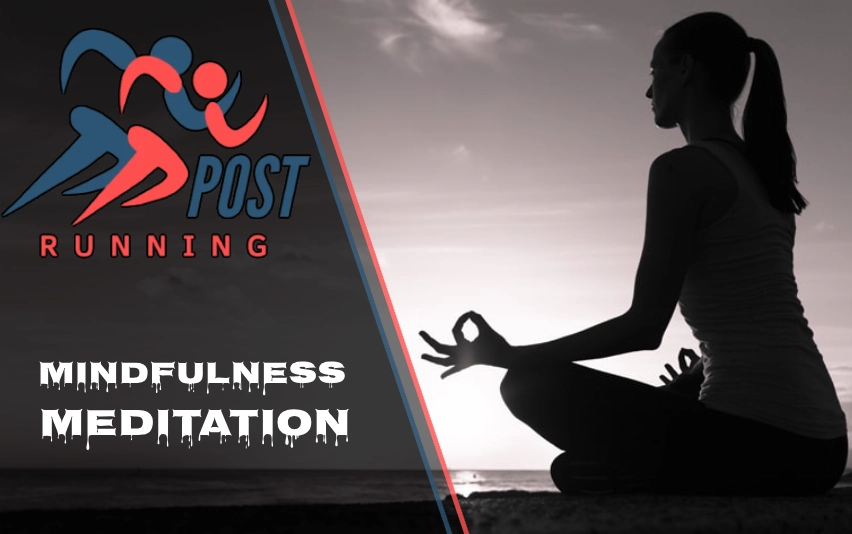Mindfulness meditation has become a buzzword in recent years, but what’s all the fuss about? This ancient practice, rooted in Eastern traditions, has found its way into the modern Western world, offering a simple yet powerful tool for managing stress, improving mental health, and enhancing overall well-being. Let’s dive into the world of mindfulness meditation and explore its origins, benefits, and how it’s shaping our contemporary society.
Introduction
In today’s fast-paced world, where stress and anxiety seem to be constant companions, mindfulness meditation offers a beacon of hope. It’s a practice that encourages us to pause, breathe, and connect with the present moment. But don’t be fooled by its simplicity – this age-old technique has profound effects on our minds and bodies.
Mindfulness meditation isn’t just a passing trend. It’s a practice with deep historical roots that has stood the test of time. From ancient Buddhist monasteries to modern corporate boardrooms, this technique has evolved and adapted, proving its relevance across cultures and centuries.
What is Mindfulness Meditation?
At its core, mindfulness meditation is about paying attention. It’s the practice of intentionally focusing on the present moment without judgment. Sounds easy, right? Well, if you’ve ever tried to sit still and focus on your breath for even a minute, you’ll know it’s not as simple as it seems!
But here’s where it gets interesting: mindfulness and meditation aren’t exactly the same thing. Mindfulness is a state of awareness that can be practiced anytime, anywhere. Meditation, on the other hand, is a formal practice where you set aside time to cultivate this awareness. Mindfulness meditation combines both – it’s a structured way to develop and deepen your mindfulness skills.
Origins and History
The roots of mindfulness meditation stretch back over 2,500 years to ancient Buddhist and Hindu traditions. In these Eastern philosophies, mindfulness was seen as a path to enlightenment and freedom from suffering.
But it wasn’t until the 1970s that mindfulness meditation really started to gain traction in the West. Enter Jon Kabat-Zinn, a molecular biologist with a keen interest in meditation. He took the core principles of Buddhist mindfulness and stripped away the religious elements, creating a secular practice that could be easily adopted by Westerners. This was the birth of Mindfulness-Based Stress Reduction (MBSR), a program that would go on to revolutionize the way we think about mental health and well-being.
Key Figures in Mindfulness Meditation
No discussion of mindfulness meditation would be complete without mentioning Siddhartha Gautama, better known as the Buddha. While he didn’t invent meditation, he did develop specific mindfulness techniques that form the basis of many practices today.
Fast forward to the 20th century, and we meet Jon Kabat-Zinn. His work in bringing mindfulness to the mainstream has been nothing short of revolutionary. But he’s not alone in this field. Other influential teachers and researchers like Thich Nhat Hanh, Sharon Salzberg, and Daniel Goleman have all played crucial roles in popularizing and validating mindfulness meditation in the West.
How Mindfulness Meditation Works
So, how exactly do you “do” mindfulness meditation? The basic technique is surprisingly simple. Find a comfortable position, close your eyes, and focus on your breath. When your mind wanders (and it will), gently bring your attention back to your breath. That’s it!
Of course, there are many variations and more advanced techniques, but this is the essence of the practice. It’s not about clearing your mind of thoughts (that’s impossible!), but about observing your thoughts without getting caught up in them.
But what’s happening in your brain when you meditate? Neuroscience is starting to unravel this mystery. Studies have shown that regular meditation can actually change the structure and function of your brain. It can increase gray matter density in areas associated with learning, memory, and emotional regulation. It can also reduce activity in the “default mode network,” the part of your brain responsible for mind-wandering and self-referential thoughts.
Benefits of Mindfulness Meditation
The benefits of mindfulness meditation are wide-ranging and well-documented. Here’s a quick rundown:
- Stress reduction: Meditation can lower cortisol levels, helping you feel calmer and more relaxed.
- Improved focus and attention: Regular practice can enhance your ability to concentrate and avoid distractions.
- Enhanced emotional regulation: Meditation can help you manage your emotions more effectively, reducing reactivity and increasing resilience.
- Better sleep quality: Many people find that meditation helps them fall asleep faster and sleep more soundly.
- Pain management: Mindfulness techniques can change your relationship with pain, making it more manageable.
- Potential career benefits: Improved focus, creativity, and stress management can all contribute to better job performance.
But remember, meditation isn’t a magic pill. These benefits come with regular practice over time.
Mindfulness Meditation in Modern Society
Mindfulness meditation has come a long way from its roots in Eastern spirituality. Today, it’s being used in healthcare settings to treat conditions like anxiety, depression, and chronic pain. Many therapists incorporate mindfulness techniques into their practice, recognizing its power as a tool for mental health.
In the corporate world, mindfulness is gaining traction as a way to reduce workplace stress and improve productivity. Companies like Google, Apple, and Nike offer mindfulness training to their employees. There’s even a growing industry around mindfulness apps and products, making the practice more accessible than ever before.
Timeline of Mindfulness Meditation Development
Let’s take a quick journey through time to see how mindfulness meditation has evolved:
- Circa 500 BCE: Mindfulness practices emerge in Buddhist and Hindu traditions.
- 1881: Thomas William Rhys Davids translates the Pali word “Sati” to “mindfulness,” introducing the concept to the English-speaking world.
- 1979: Jon Kabat-Zinn establishes the Stress Reduction Clinic at the University of Massachusetts Medical School, marking the beginning of secular mindfulness in the West.
- 1990s-2000s: Scientific research on mindfulness meditation begins to gain momentum, leading to increased mainstream acceptance.
- Present day: Mindfulness meditation is widely adopted in various fields, from healthcare to education to business.
Challenges and Criticisms
Despite its popularity, mindfulness meditation isn’t without its critics. Some worry about the potential for misuse or over-commercialization. There’s a concern that as mindfulness becomes more mainstream, it may lose its depth and become just another self-help fad.
There are also valid concerns about cultural appropriation. As mindfulness has been adapted for Western audiences, some argue that it’s been stripped of its cultural and spiritual context, potentially losing some of its original meaning and power.
Conclusion
Mindfulness meditation is more than just a trendy relaxation technique. It’s a powerful tool for managing stress, improving mental health, and enhancing overall well-being. From its ancient roots to its modern applications, mindfulness meditation has proven its relevance and effectiveness across cultures and centuries.
In our fast-paced, always-on world, the ability to pause, breathe, and connect with the present moment is more valuable than ever. Whether you’re looking to reduce stress, improve focus, or simply find a moment of calm in your busy day, mindfulness meditation offers a simple yet profound way to nurture your mental and emotional health.
Remember, mindfulness is a skill that can be developed with practice. So why not give it a try? You might be surprised at the difference a few minutes of mindfulness can make in your day.
Discover more fascinating insights—explore Running Posts today.













